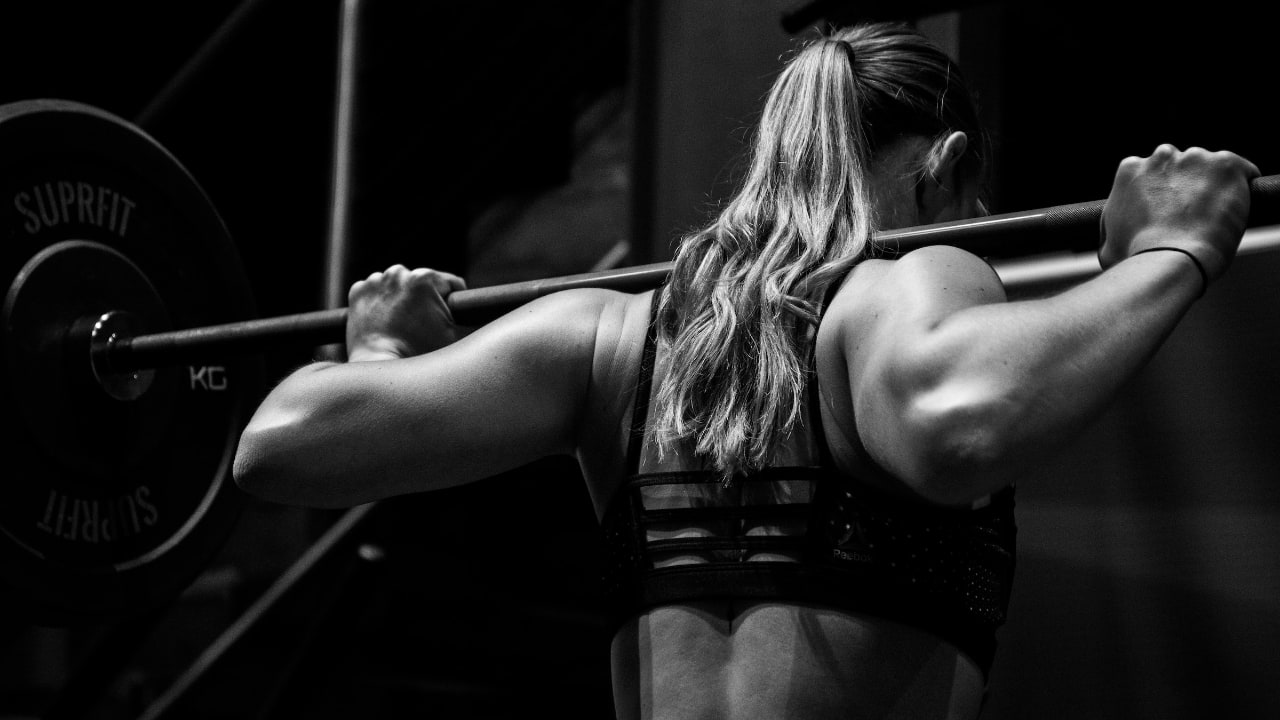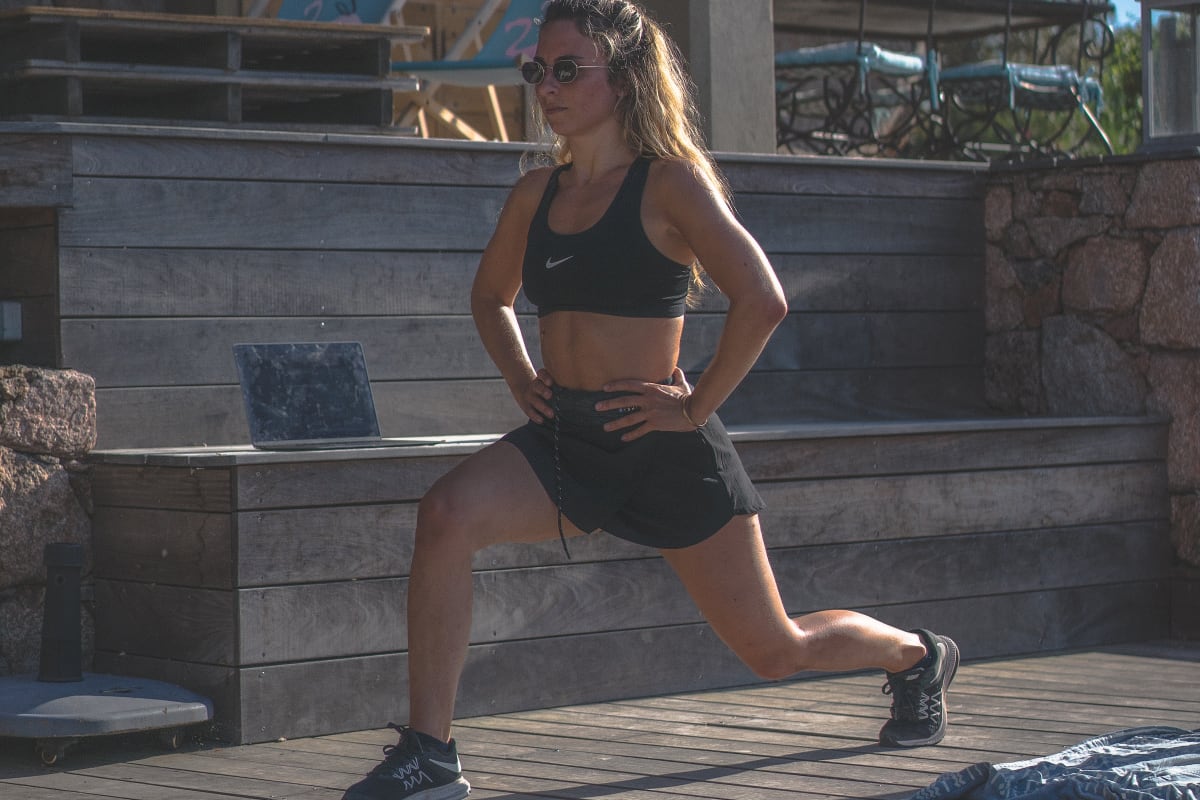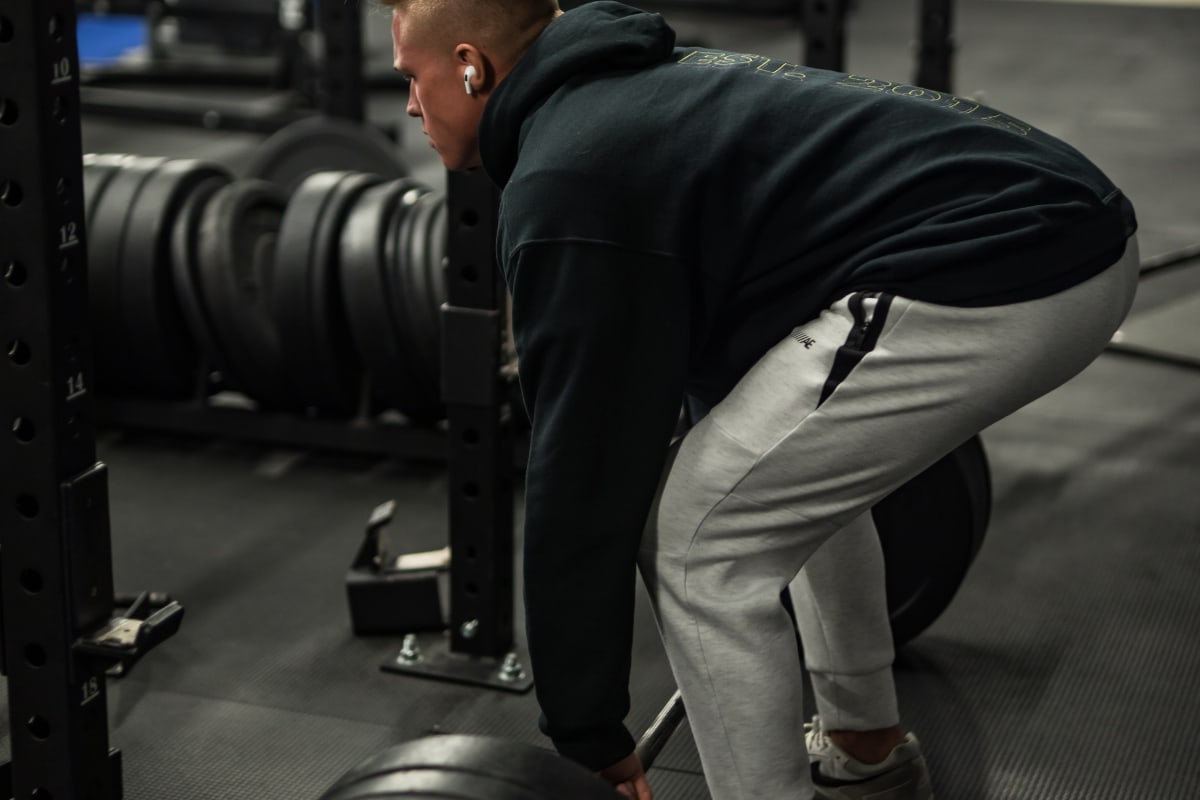Updated November 8, 2023
Do you want to build stronger, more powerful glutes, quadriceps, and hamstrings? You’ve come to the right place. This in-depth guide examines the what, why, and how of sculpting athletic legs and glutes.
The Best Exercises for Your Glutes, Quads and Hamstrings
Here are some of the top exercises recommended by trainers and physical therapists to build your glutes, quads, and hamstrings:
Barbell Squats: Barbell squats are considered the king of leg exercises. They work all the major muscles of your lower body, including glutes, quads, and hamstrings. To do a barbell squat, place a barbell across your upper back and stand with feet shoulder-width apart. Bend your knees and hips and lower your body until your thighs are parallel to the floor. Push back up to the starting position.
Romanian Deadlifts: Romanian deadlifts focus on your hamstrings and glutes. Hold a barbell in front of your thighs with an overhand grip. Keep your back straight and bend at the hips to lower the bar toward the middle of your shins. Squeeze your glutes and hamstrings to lift back up to the starting position.
Bulgarian Split Squats: Bulgarian split squats are a single-leg exercise that isolates each leg. They provide a safer alternative to barbell squats. Place one foot on a bench behind you and hold dumbbells at your sides. Bend your front knee and lower your body until your back knee nearly touches the ground. Push back up to the starting position. Repeat on the other leg.
Glute Ham Raises: Glute ham raises target your glutes and hamstrings. Lie face down on a glute ham raise bench or similar apparatus with your knees on the pad and feet secured. Raise your body by extending your glutes and hamstrings until your torso is straight. Squeeze at the top and slowly lower back down with control.
Calf Raises: Calf raises work your calf muscles to complete your lower body workout. Hold a barbell across your shoulders or dumbbells at your sides. Raise your heels off the floor as high as possible while keeping your knees straight or slightly bent. Hold, then lower back down. Calf raises can be done with straight or bent knees to target the soleus and gastrocnemius muscles.

Bodyweight Exercises for Glutes, Quads and Hamstrings
If you don’t have access to weights, you can still get an effective workout for your glutes, quads, and hamstrings using just your body weight. Here are some of the top bodyweight exercises for your lower body:
Bodyweight Squats (air squats): Bodyweight squats are a simple but effective exercise for glutes and quads. Stand with feet shoulder-width apart and hold your arms straight out in front of you. Bend your knees and lower into a squat until your thighs are parallel to the floor. Push back up to the starting position. For an added challenge, hold dumbbells or a barbell across your shoulders.
Lunges: Lunges work your glutes and quads through a more extended range of motion. Step one leg forward and lower your body until both knees are bent at about 90 degrees and your back knee nearly touches the ground. Push back to the starting position. You can do forward lunges, reverse lunges, or lateral lunges.
Step-Ups: Step-ups work your glutes and hamstrings. Place one foot completely on a bench or chair and step up so that you’re supporting your weight with that leg. Step back down one leg at a time. Alternate and repeat for several reps on each side.
Burpees: Burpees are a full-body exercise that works your glutes, quads, and hamstrings. Start in a standing position, drop into a squat, kick your feet back to a push-up position, then quickly bring your feet back in and jump up. Land in a squat and repeat. Burpees can be modified by stepping back one leg at a time instead of kicking back.
These bodyweight exercises require no equipment and can be done anywhere. Aim for 2-3 sets of 10-20 reps of each exercise to strengthen and tone your glutes, quads, and hamstrings. Increase the intensity over time as your lower body gets stronger.

Warming Up Your Glutes, Quads, and Hamstrings
It’s essential to warm up your glutes, quads, and hamstrings before strength training to reduce injury risk and improve your performance. An effective warm-up should last 5-10 minutes and include the following:
Light cardio: Start with 5-10 minutes of light cardio exercise like walking, jogging in place, or biking. This will raise your heart rate and warm up your muscles.
Dynamic stretches: Do bodyweight squats, lunges, leg swings, and hip openers. Start with small, controlled movements and build up as your muscles warm up. Dynamic stretches are active stretches that prepare your muscles for activity.
Foam rolling: Use a foam roller to massage tight areas of your glutes, quadriceps, hamstrings, and IT bands. Roll up and down each muscle group for 30-60 seconds. Foam rolling helps loosen tight muscles and connective tissue, allowing for better mobility and range of motion.
Be sure to do light cardio and dynamic stretches before foam rolling. Start your workout with compound exercises like squats and lunges, then move on to more isolated exercises. A proper warm-up will allow you to get the most out of your lower body workout and reduce delayed onset muscle soreness.
Maximizing Your Glutes, Quads, and Hamstrings Workout
Here are some tips to maximize the effectiveness of your glutes, quads and hamstrings workout:
Focus on progressive overload. Progressive overload means continually increasing the difficulty of your workouts over time as your strength and endurance improve. You can do this by increasing the weight, increasing the reps, decreasing the rest periods, or adding more exercises. Progressive overload will keep challenging your muscles to continue growing stronger.
Prioritize compound exercises. Compound exercises like squats, deadlifts, lunges, and step-ups work multiple muscle groups simultaneously. Focus most of your workout on these exercises, then do isolated exercises like leg extensions, leg curls, etc. Compound exercises stimulate the most muscle growth.
Train through the full range of motion. Use weights that allow you to lower into a deep squat, bend fully at the hips for deadlifts and lunges, and raise your heels as high as possible for calf raises. Full range of motion exercises maximize muscle activation and stimulate more muscle fibers.
Squeeze and hold. At the top of each rep, squeeze and hold your glutes, quads, and hamstrings for 1-2 seconds. This helps establish a strong mind-muscle connection, which leads to better muscle recruitment and growth over time.
Consider dropsets. For one set, do your usual number of reps, then immediately decrease the weight and do more reps until failure. This technique, called dropsets, extends your set to maximize muscle fatigue and stimulation. Dropsets can be done with compound or isolated exercises.
Get enough protein and calories. To build muscle, you need to eat more calories and consume adequate protein with each meal. Aim for 20 to 30 grams of protein in each meal, especially after your workout. Good sources include chicken, fish, lean meat, eggs, nuts, beans, and dairy.
These tips will help maximize your glutes, hamstrings, and quadriceps workout for the best results. Be consistent, start light and build up progressively, use good form, and push your muscles with drop sets and full ranges of motion. Combined with a muscle-building diet, you’ll gain strength and sculpt athletic legs and a toned booty.

The Advantages of Robust Glutes, Quadriceps, and Hamstrings
Enhancing the strength of your glutes, quads, and hamstrings transcends beyond mere aesthetics, offering significant perks for both your fitness and overall health. Here’s how fortifying these muscle groups can be a game-changer:
- Elevated Sports Performance: The lower body is the foundation of your athletic capabilities. By empowering your glutes, you can expect a notable boost in your explosive abilities, directly translating to better speed and agility, which is crucial in many sports. Similarly, strong quads are indispensable for quick movements and sustaining a stable equilibrium during dynamic actions.
- Greater Balance and Stability: Stability in motion starts with solid quads, fundamental to knee support. Strengthened glutes also contribute to a steady pelvis, reducing excessive sway in the lower back and pelvis during movement and thus enhancing your balance during daily activities and sports.
- Injury Risk Mitigation: Strengthening the muscles of the lower body offers a protective shield for your joints. Robust glutes can alleviate stress on the lower back and lessen knee discomfort, especially during high-impact actions. Meanwhile, mighty hamstrings contribute to stabilizing the knee, decreasing the likelihood of injuries.
- Posture Enhancement: Posture is profoundly influenced by the condition of your posterior chain. Solid glutes and hamstrings are critical for supporting the lower back, potentially easing back discomfort. Additionally, toned quads help in maintaining proper knee alignment, contributing to an overall better posture.
- Improved Daily Functioning: Glutes, quads, and hamstrings are integral to nearly all lower body movements. When these muscles are powerful, you’re more likely to perform everyday tasks with greater ease and less fatigue, from climbing stairs to lifting objects.
By focusing on these benefits in your training, you’re not just working towards a better-looking physique but also investing in a more capable, injury-resistant, and efficient body.
Anatomy and Function of the Glutes, Quads and Hamstrings
The anatomy and function of the glutes, quads, and hamstrings are crucial to understanding how to effectively train and strengthen these muscle groups for better performance and stability.
Glutes
The gluteal muscles comprise three primary muscles: the gluteus maximus, medius, and minimus. The gluteus maximus is the largest, pivotal in hip extension, outward rotation, and abduction. The medius and minimus lie beneath the maximus and are primarily responsible for stabilizing the pelvis and assisting with hip abduction and internal rotation1.
Quadriceps
The quadriceps, located at the front of the thigh, consist of four muscles: rectus femoris, vastus lateralis, vastus medialis, and vastus intermedius. These muscles collaborate to extend the knee and are vital for walking, running, and jumping. The rectus femoris also plays a role in hip flexion, which is unique among the quad muscles.
Hamstrings
Situated at the back of the thigh, the hamstrings include three muscles: the biceps femoris, semitendinosus, and semimembranosus. They work together to bend the knee and extend the hip, with the biceps femoris also contributing to the lateral rotation of the lower leg when the knee is bent and the semimembranosus and semitendinosus assisting with medial rotation of the hip and lower leg.[1]
Understanding these functions is essential for designing a workout routine that effectively targets these muscles for strength and endurance, aiding in activities ranging from daily movements to athletic performance. It is also vital to ensure exercises are performed correctly to maximize benefits and reduce the risk of injury.
Common Mistakes to Avoid
To get the most out of your glutes, quads, and hamstrings workout, avoid these common mistakes:
Not warming up properly. Skipping an adequate warm-up increases your risk of injury and reduces performance. Be sure to warm up with light cardio and dynamic stretches for 5-10 minutes before strength training your lower body.
Using momentum instead of control. Swinging weights or using momentum to lift takes work away from your target muscles. Lift and lower weights in a slow, controlled manner to keep tension on your glutes, quads, and hamstrings throughout the exercise.
Not going deep enough. Partial reps that don’t go through the full range of motion won’t maximize muscle activation. Squat as low as you can while keeping your heels on the floor and back straight, and bend fully at the hips for deadlifts and lunges. A full range of motion is vital.
Not changing your routine. Doing the same exercises, weights, sets, and reps every workout will lead to plateaus over time. Change your routine every 4 to 6 weeks by varying your exercises, adding dropsets or supersets, increasing weight and decreasing reps, etc. Keep your muscles challenged for continued progress.
Not getting enough rest. Rest and recovery is just as important as your actual workouts. Muscle is built when you rest, not when you’re working out. Aim for 7 to 9 hours of sleep per night and take one to two days off from strength training each week. Listen to your body and take additional rest days when needed.
Poor exercise form. Using improper form during squats, deadlifts, and lunges can lead to injury and reduce effectiveness. Learn the proper form for each exercise and start with a lighter weight until you’ve mastered it. Form is more important than how much weight you can lift.
Avoiding these common mistakes will help you get better results from your glutes, quads, and hamstrings workout. Use good form, full ranges of motion, adequate warm-up and rest, and continually change your routine to keep progressing. Building strong and toned legs requires consistency, progression, and avoiding shortcuts.
Now get to work – your glutes, quads, and hamstrings will thank you!
[1] https://my.clevelandclinic.org/health/body/21904-hamstring-muscles







